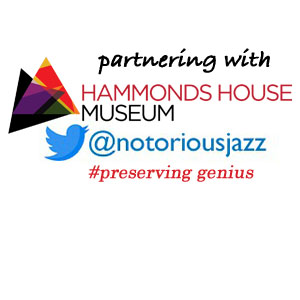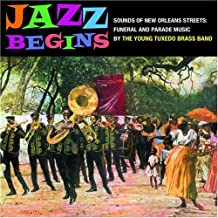
Daily Dose Of Jazz…
Herman Edward Sherman, Sr. was born in New Orleans, Louisiana on June 28, 1923. He played clarinet in high school and later picked up the alto and tenor saxophone. He began working with brass bands on the New Orleans jazz scene around 1940, playing in the Eureka Brass Band, the Onward Brass Band, and the Young Tuxedo Brass Band.
Taking over the leadership of the Young Tuxedo Brass Band in 1971, he remained for the rest of his life. During his tenure the group toured the United States repeatedly and performed in Berlin, Germany in 1980. He led the ensemble in the studio for their 1983 release Jazz Continues on 504 Records.
Occasionally he played in dance bands, but concentrated on his work in brass bands. Saxophonist and bandleader Herman Sherman passed away on September 10, 1984 in his hometown.
More Posts: bandleader,history,instrumental,music,saxophone
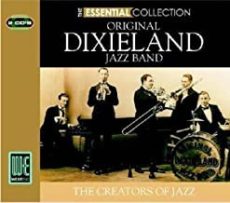
Daily Dose Of Jazz…
Antonio Sparbaro was born on June 27, 1897 in New Orleans, Louisiana to an immigrant Sicilian family. Early in his career he played with the Frayle Brothers Band, possibly as early as 1911, and the Reliance Band of Papa Jack Laine. He did side work with Merritt Brunies and Carl Randall.
He joined the Original Dixieland Jass Band for their initial recordings in 1917 and he became its leader in the 1940s, remaining a member of the ensemble until its dissolution in the 1960s. He was the only founding member still in the group at that time. Sbarbaro composed for the group, writing the tune Mourning Blues among others. He remained a fixture of Dixieland jazz performance for most of his life. He played later in life in New Orleans with Miff Mole, Big Chief Moore, Pee Wee Erwin, and Eddie Condon.
He played at the New York World’s Fair in 1941 and with Connee Boswell in the 1950s. Quitting music in the 1960s due to the popularity of rock & roll, drummer Tony Sparbaro, known professionally as Tony Sbarbaro or Tony Spargo, passed away on October 30, 1969 in New York City. He was the drummer of the Original Dixieland Jass Band for over 50 years and their tune Darktown Strutters’ Ball was inducted into the Grammy Hall of Fame in 2006
More Posts: drums,history,instrumental,jazz,music
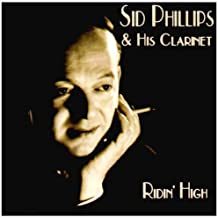
Daily Dose Of Jazz
Sid Phillips was born Isador Simon Phillips on June 14, 1907 in London, England into a Jewish family. He learned violin and piano as a child, and played reeds in his teens as a member of his brother’s European band. He got his start in the music business as a publisher and director for Edison Bell.
In 1930, Phillips began writing arrangements for Bert Ambrose, and joined Ambrose’s ensemble in 1933, remaining there until 1937. Towards the end of the decade he was playing in the United States on radio and freelancing in clubs.
During World War II, Sid served in the Royal Air Force, then put together his own quartet in 1946 and wrote several pieces for the BBC Symphony Orchestra. He led a Dixieland jazz band of his own formation from 1949, and his sidemen variously included George Shearing, Colin Bailey, Tommy Whittle, and Kenny Ball.
Phillips’s first recordings under his own name were made in 1928. In 1937 through 1938, a number of his recordings were issued in the United States, through a contract he signed with Irving Mills and issued on Mills’ Variety label, as well as Vocalion, Brunswick and Columbia labels, though most of his recordings were made in England.
Clarinetist, arranger and bandleader Sid Phillips, who continued to record as a leader well into the 1970s, passed away on May 23, 1973 at aged 65 in Chertsey, Surrey, England.
More Posts: arranger,bandleader,clarinet,history,instrumental,jazz,music
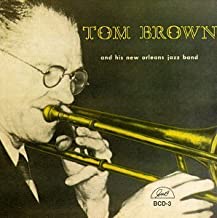
Daily Dose Of Jazz…
Tom Brown was born in Uptown New Orleans, Louisiana on June 3, 1888. He played trombone with the bands of Papa Jack Laine and Frank Christian, and by 1910 he was usually working with leading bands under his own name. The band played in a style then locally known as “hot ragtime” or “ratty music”. In early 1915, his band was heard by Vaudeville dancer Joe Frisco who then arranged a job for Brown’s band in Chicago, Illinois.
Tom Brown’s Band from Dixieland opened up at Lamb’s Cafe in Chicago, this band seems to be the first to be popularly referred to as playing Jass. The term jass, at that time, had a sexual connotation, which drew more people to come to hear the band out of curiosity. Realizing the publicity potential he started calling his group Brown’s Jass Band.
Heading to Chicago, Illinois he enjoyed over four months of success there before moving to New York City, where they played for an additional four months more prior to returning to New Orleans in 1916. Once home, Tom immediately put together another band with Larry Shields, Alcide Nunez, and Ragbaby Stevens, then went to work for Bert Kelly in New York City, replacing the Original Dixieland Jass Band at Reisenweber in 1918. He started doing freelance recording work with New York dance and novelty bands, then joined the band of Harry Yerkes.
Brown also played the Vaudeville circuit in the acts of Joe Frisco and Ed Wynn. Late 1921 he returned to Chicago and joined Ray Miller’s Black & White Melody Boys, with whom he made more recordings. During this period he also co-lead a dance band with his brother Steve. Back in New Orleans he played with Johnny Bayersdorffer and Norman Brownlee’s bands, making a few excellent recordings.
During the Great Depression he supplemented his income from music by repairing radios. He opened up a music shop and a junk shop on Magazine Street. He played string bass in local swing and dance bands. With the revival of interest in traditional jazz he played in various Dixieland bands in the 1950s. Making his last recording just weeks before his death, his trombone playing apparently did not suffer from the fact that he had neither teeth or dentures at the time. Trombonist Tom Brown, who also played string bass, passed away in New Orleans on March 25, 1958.
More Posts: bandleader,history,instrumental,jazz,string bass,trombone
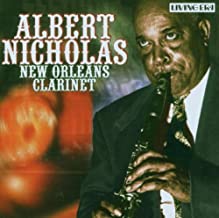
Daily Dose Of Jazz…
Albert Nicholas was born on May 27, 1900 in New Orleans, Louisiana and his primary instrument was the clarinet, which he studied with Lorenzo Tio in his hometown of New Orleans. Late in the 1910s he played with Buddy Petit, King Oliver, and Manuel Perez.
Spending three years in the Merchant Marines, he then joined Oliver in Chicago, Illinois from 1925 to 1927. After time in East Asia and Egypt, he returned to New York City in 1928 and played with Luis Russell until 1933. During this time in the city Albert played with Red Allen, Charlie Holmes, and J. C. Higginbotham. He would later play with Chick Webb, and Louis Armstrong with Russell and Jelly Roll Morton.
The Dixieland jazz revival of the late 1940s reinvigorated his career, playing with Art Hodes, Bunk Johnson, and Kid Ory. Nicholas had a regular gig with Ralph Sutton in 1948. In 1953 he moved to France and except for recording sessions in the U.S. in 1959-60, he remained there for the rest of his life.
Clarinetist Albert Nicholas, who was active from his teen years until his death, passed away on September 3, 1973 in Base, Switzerland.
More Posts: clarinet,history,intrumental,jazz,music


